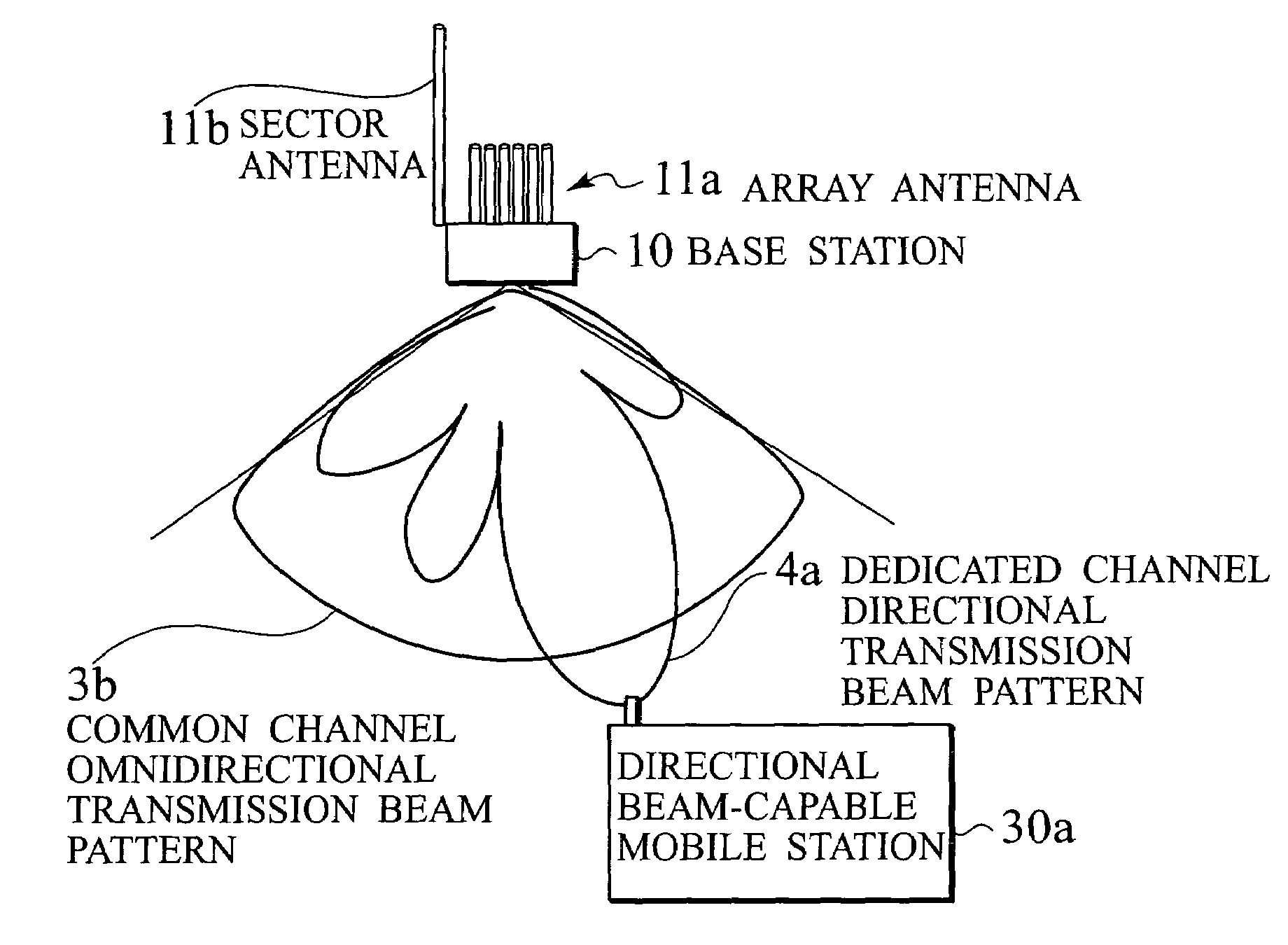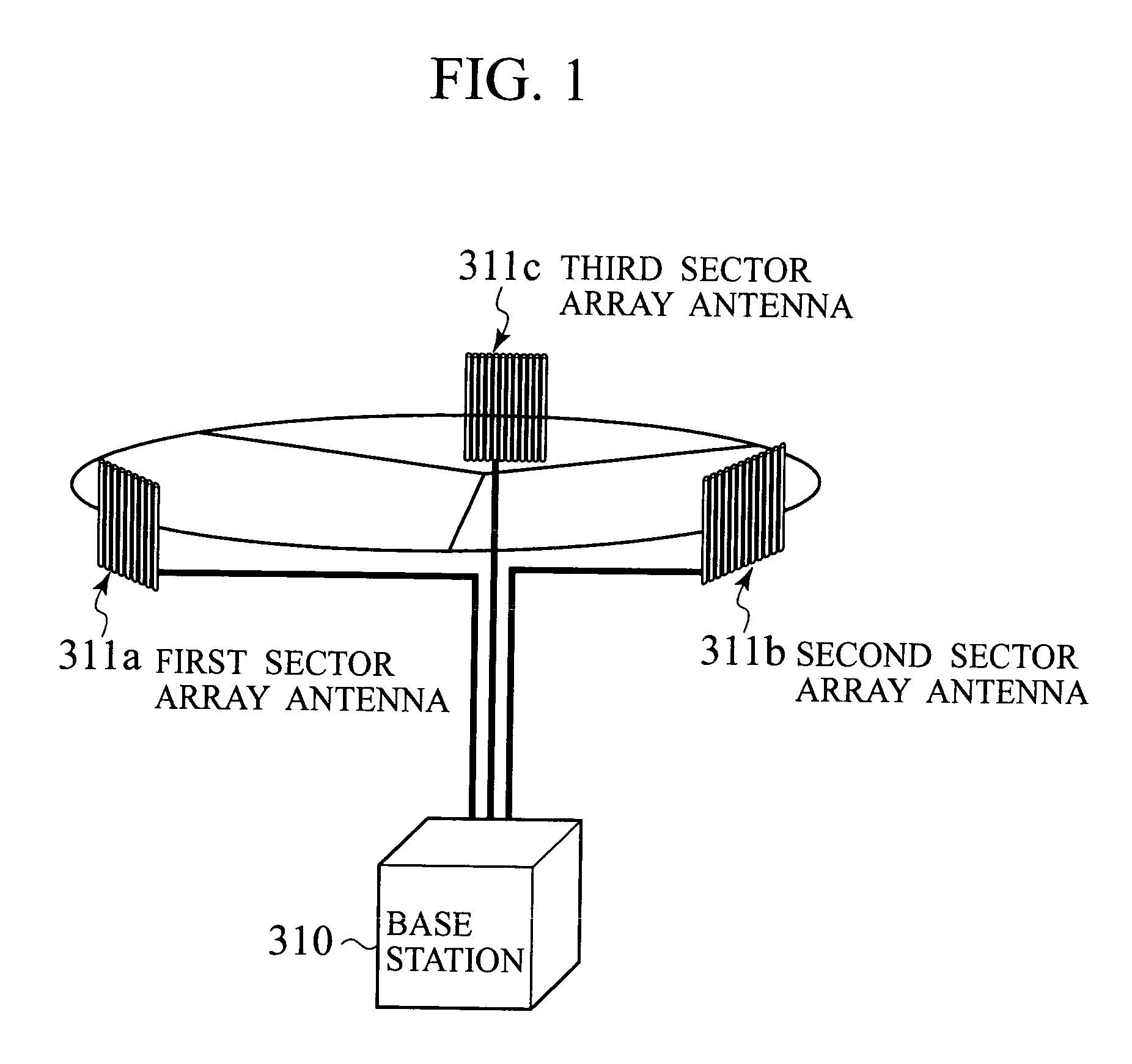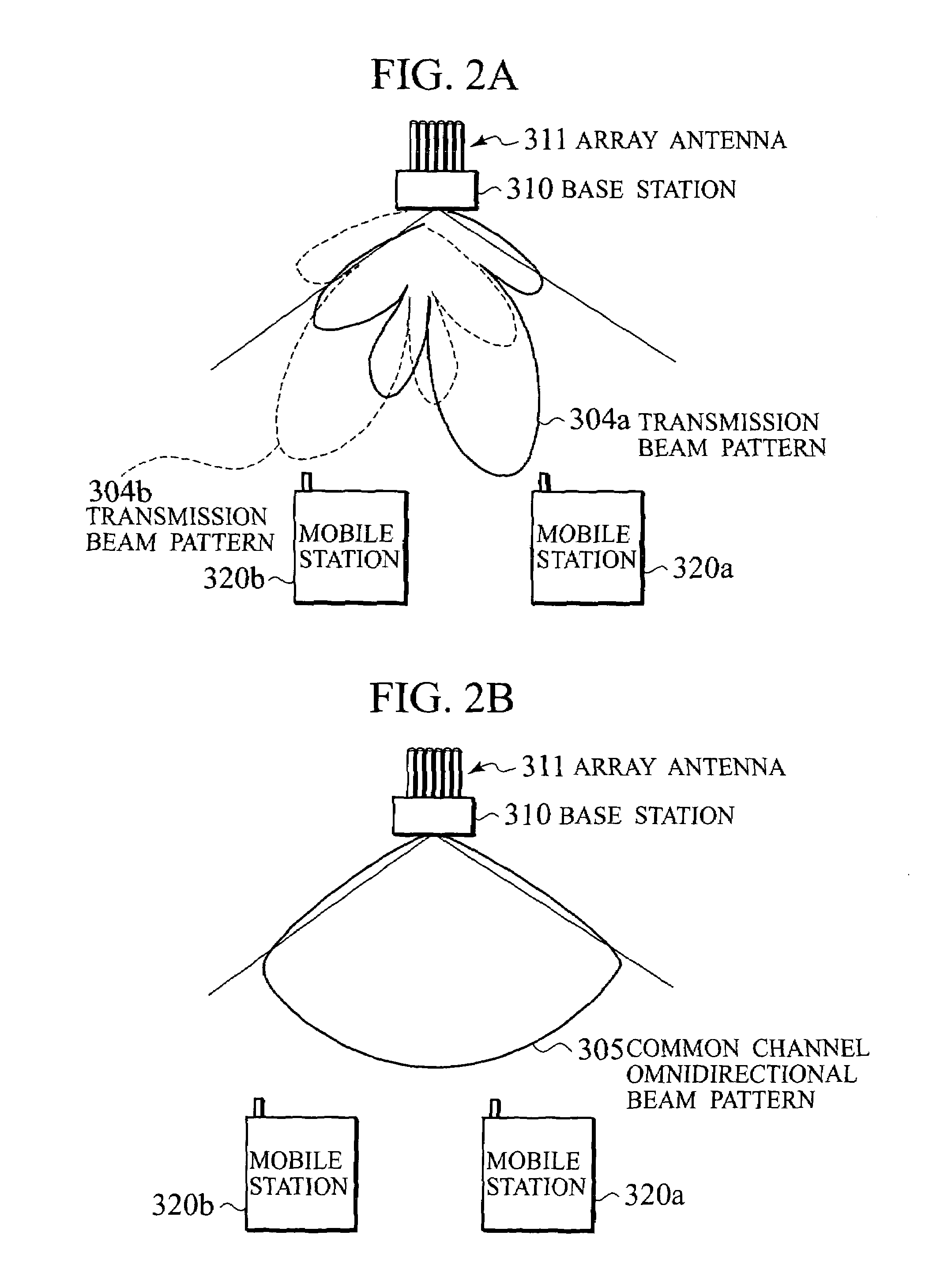Base station, mobile communication system, and communication method
a mobile communication system and base station technology, applied in the field of base station, mobile communication system, communication method, to achieve the effect of reducing the equipment scale of a base station
- Summary
- Abstract
- Description
- Claims
- Application Information
AI Technical Summary
Benefits of technology
Problems solved by technology
Method used
Image
Examples
first embodiment
[First Embodiment]
(Mobile Communication System)
[0034]As shown in FIGS. 3A and 3B, a mobile communication system adopts a sector-cell structure that covers a service area by dividing a cell 1 into a plurality of sectors and placing for each sector on a base station 10. As the sector-cell structure, there is a three-sector structure as shown in FIG. 3A where the cell 1 is divided into three sectors, a first sector 1a, a second sector 1b, and a third sector 1c; and a six-sector structure as shown in FIG. 3B where the cell1 is divided into six sectors, a first sector 1a, a second sector 1b, a third sector 1c, a fourth sector 1d, a fifth sector 1e, and a sixth sector 1f. A mobile communication system adopting the three-sector structure is described below, as an example.
[0035]As shown in FIG. 4, a mobile communication system 100 comprises a base station 10, a radio network control equipment 20, and a plurality of mobile stations 30. The base station 10 connects radio links with the mobile...
second embodiment
[Second Embodiment]
(Mobile Communication System)
[0074]A mobile communication system 200 adopting the three-sector structure shown in FIG. 3A is described below, as an example. As shown in FIG. 9, a mobile communication system 200 comprises a base station 210, a radio network control equipment 20, and a plurality of mobile stations 230. The base station 210 comprises a first sector array antenna 211a1, a first sector sector antenna 211b1, and a first sector sector antenna 211c1, which cover the first sector 1a; a second sector array antenna 211a2, a second sector sector antenna 211b2, and a second sector sector antenna 211c2, which cover the second sector 1b; and a third sector array antenna 211a3, a third sector sector antenna 211b3, and a third sector sector antenna 211c3, which cover the third sector 1c.
[0075]As shown in FIG. 9, the number of the sector antennas for each sector is two, that is, the base station 210 comprises a plurality of sector antennas. When DS-CDMA is adopted...
modified example
[0111]The present invention is not limited to the described above first and second embodiments, and various modifications are possible. The base stations 10 and 210 shown in FIG. 4 and FIG. 9 have the same antenna configuration for all of the first sector 1a through third sector 1c, but are not limited thereto. For example, the base stations 10 and 210 may have a different antenna configuration for each sector, according to the propagation environment surrounding the base stations 10 and 210 and the arranging environment of the base stations 10 and 210, array antennas, and sector antennas.
[0112]In addition, the base station 10 shown in FIG. 5 may perform antenna diversity reception of signals from the mobile stations 30 by using the array antenna 11a and the sector antenna 11b. In this case, the base station 10 must have an array antenna weight controller, an array antenna combiner, a demodulator for the array antenna 11a, and a combiner as shown in FIG. 12, in addition to the demod...
PUM
 Login to View More
Login to View More Abstract
Description
Claims
Application Information
 Login to View More
Login to View More - R&D
- Intellectual Property
- Life Sciences
- Materials
- Tech Scout
- Unparalleled Data Quality
- Higher Quality Content
- 60% Fewer Hallucinations
Browse by: Latest US Patents, China's latest patents, Technical Efficacy Thesaurus, Application Domain, Technology Topic, Popular Technical Reports.
© 2025 PatSnap. All rights reserved.Legal|Privacy policy|Modern Slavery Act Transparency Statement|Sitemap|About US| Contact US: help@patsnap.com



